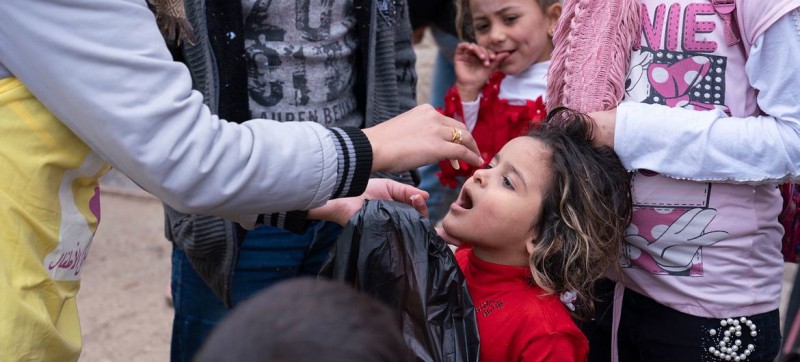
© UNICEF/Rami Nader A child is vaccinated against cholera in Aleppo, northwest Syria. (file)
In a new alert, the World Health Organization (WHO) and UN Children’s Fund (UNICEF) said that more countries now face outbreaks, increasing numbers of cases are being reported and the outcome for patients is worse than 10 years ago.
Tweet URL
Killing the poor in plain sight
“The pandemic is killing the poor right in front of us,” said Jérôme Pfaffmann Zambruni, Head of UNICEF’s Public Health Emergency unit.
Echoing the bleak outlook, WHO data indicates that by May last year, 15 countries had reported cases, but by mid-May this year “we already have 24 countries reporting and we anticipate more with the seasonal shift in cholera cases,” said Henry Gray, WHO’s Incident Manager for the global cholera response.
“Despite advances in the control of the disease made in the previous decades we risk going backwards.”
The UN health agency estimates that one billion people in 43 countries are at risk of cholera with children under five particularly vulnerable. Cholera’s extraordinarily high mortality ratio is also alarming. Malawi and Nigeria registered case fatality rates as high as three per cent this year, well above the acceptable one per cent.
Cholera cases spiking
Southeastern Africa is particularly badly affected, with infections spreading in Malawi, Mozambique, South Africa, Tanzania, Zambia and Zimbabwe. The development follows the destructive passage of Cyclone Freddy in February and March this year, leaving 800,000 people in Malawi and Mozambique internally displaced and disrupting healthcare.
These vulnerable communities are at high risk of cholera, a preventable disease which thrives in areas affected by heavy rains and floods.
A deadly combination of climate change, underinvestment in water, sanitation and hygiene services – and in some cases armed conflict – has led to the spread of the disease, agreed the two UN agencies.
Vaccines: a tool, but not overall solution
Although vaccines exist to protect against cholera, supply is insufficient to face the increasing demand. According to the WHO, 18 million doses of vaccines have been requested globally, but only eight million have been made available.
“Increasing the production is not an overnight solution,” said Mr. Gray. “The plan is to double the production of doses by 2025, but we won’t have enough if the current trend continues. Vaccine is a tool, but not an overall solution. Long term investment in water sanitation is the priority,” he added.
WHO’s wake-up call was echoed by UNICEF. “Not only (do) we need long term investments, but immediate investments in the water system to ensure access to clean water, sanitation, and dignity,” said Mr. Zambruni.
Rapid action call for water investment
To respond to the growing cholera threat, WHO is launching a 12-month Strategic Preparedness, Response and Readiness Plan, requiring $160 million, alongside UNICEF’s Call to Action for $480 million.
The combined cholera response plan will cover 40 countries in acute crisis. It will include coordination, infection surveillance and prevention, vaccination, treatment, and water, sanitation and hygiene.
The two UN agencies work closely together. “We need the funds to do what we need to do,” said Mr. Gray.

